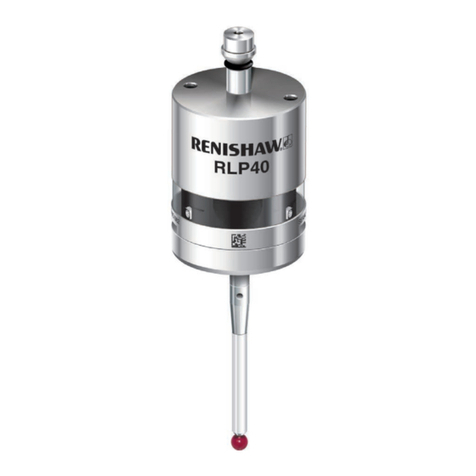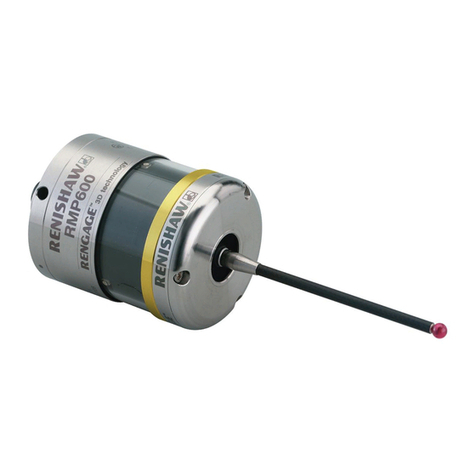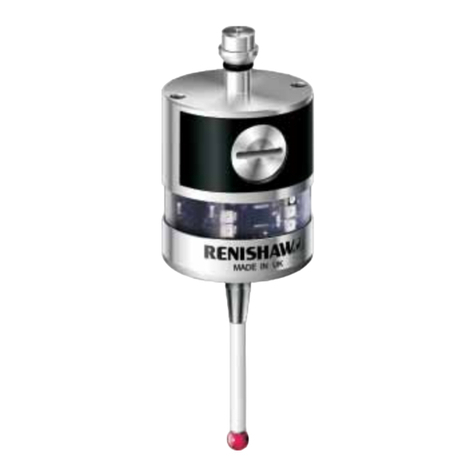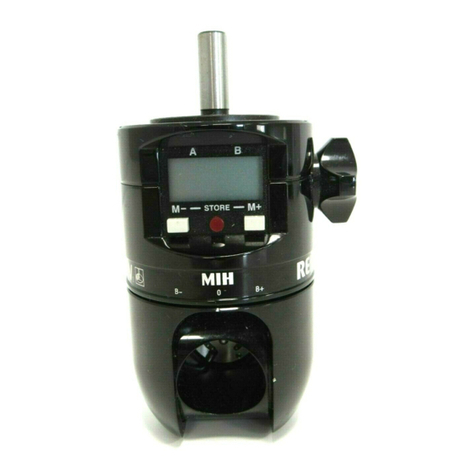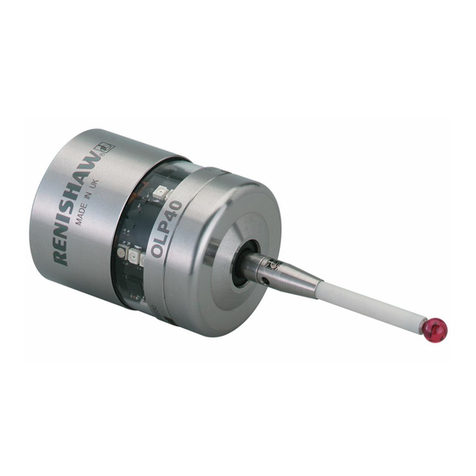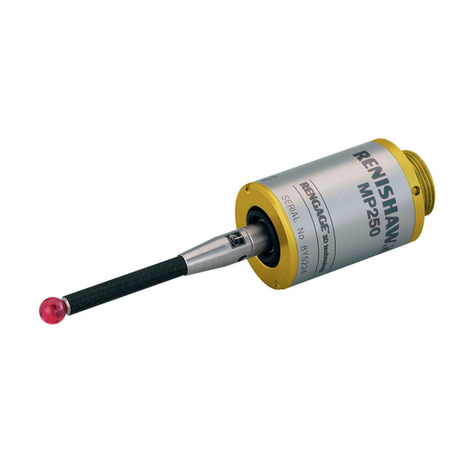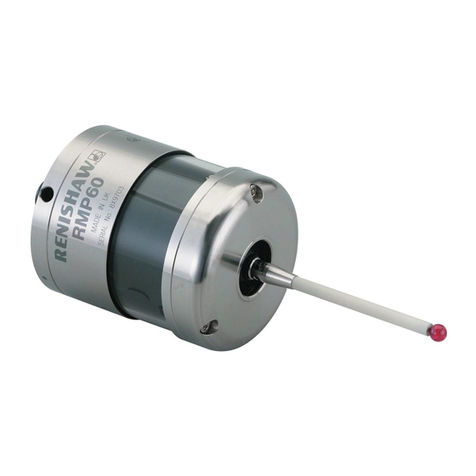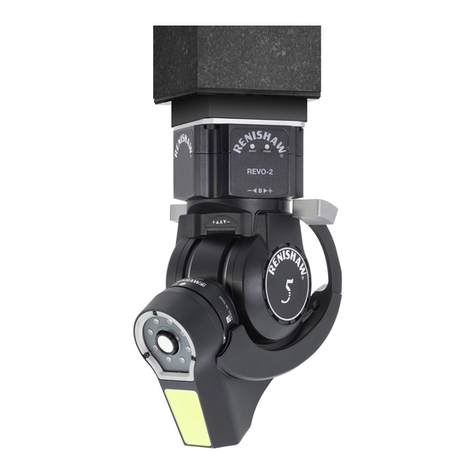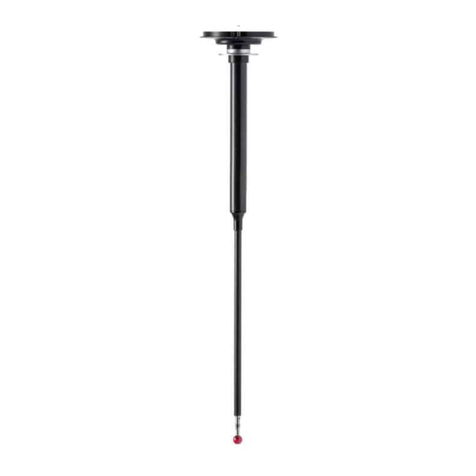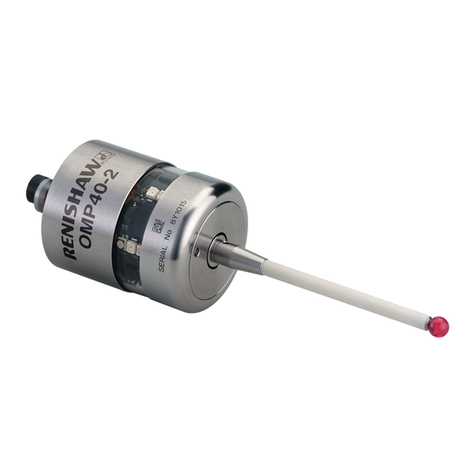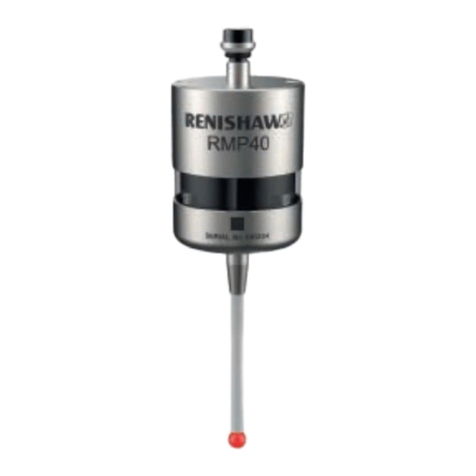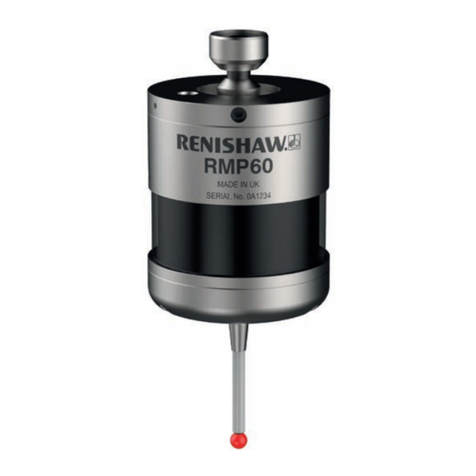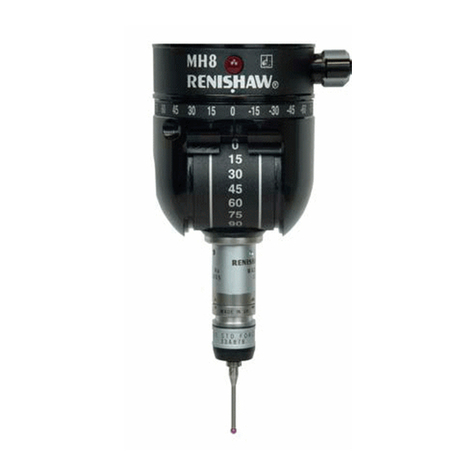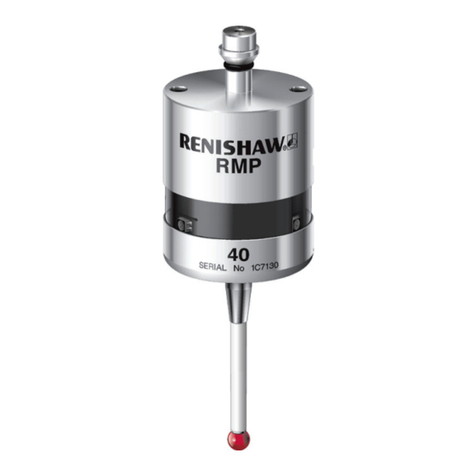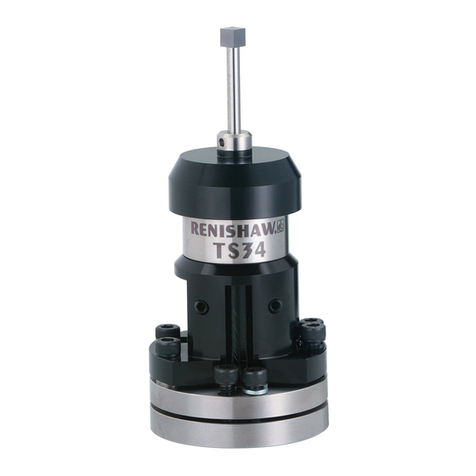
RMP60 installation guide
ii
Contents
System installation ...........................................................3.1
Installing the RMP60 with an RMI or RMI-Q .......................................3.1
Operating envelope .......................................................3.1
Positioning the RMP60 and RMI or RMI-Q ........................................3.2
Performance envelope .....................................................3.2
Preparing the RMP60 for use ..................................................3.3
Fitting the stylus ..........................................................3.3
Installing the batteries .....................................................3.5
Mounting the probe on a shank ..............................................3.6
Stylus on-centre adjustment.................................................3.7
Stylus trigger force and adjustment..............................................3.8
Calibrating the RMP60 .......................................................3.9
Why calibrate a probe? ....................................................3.9
Calibrating in a bored hole or on a turned diameter...............................3.9
Calibrating in a ring gauge or on a datum sphere ................................3.9
Calibrating the probe length ................................................3.10
Trigger Logic™ ...............................................................4.1
Reviewing the probe settings ..................................................4.1
Multiple probe mode settings ..................................................4.2
Probe settings record ........................................................4.3
Changing the probe settings ...................................................4.4
RMP60 – RMI partnership.....................................................4.7
RMP60 – RMI-Q partnership...................................................4.8
Operating mode.............................................................4.9
Maintenance .................................................................5.1
Maintenance ...............................................................5.1
Cleaning the probe ..........................................................5.1
Changing the batteries .......................................................5.2
Diaphragm replacement ......................................................5.4
RMP60M system .............................................................6.1
RMP60M system............................................................6.1
RMP60M dimensions ........................................................6.2
RMP60M screw torque values. . . . . . . . . . . . . . . . . . . . . . . . . . . . . . . . . . . . . . . . . . . . . . . . . . 6.2
Fault-finding .................................................................7.1
Parts list .....................................................................8.1
